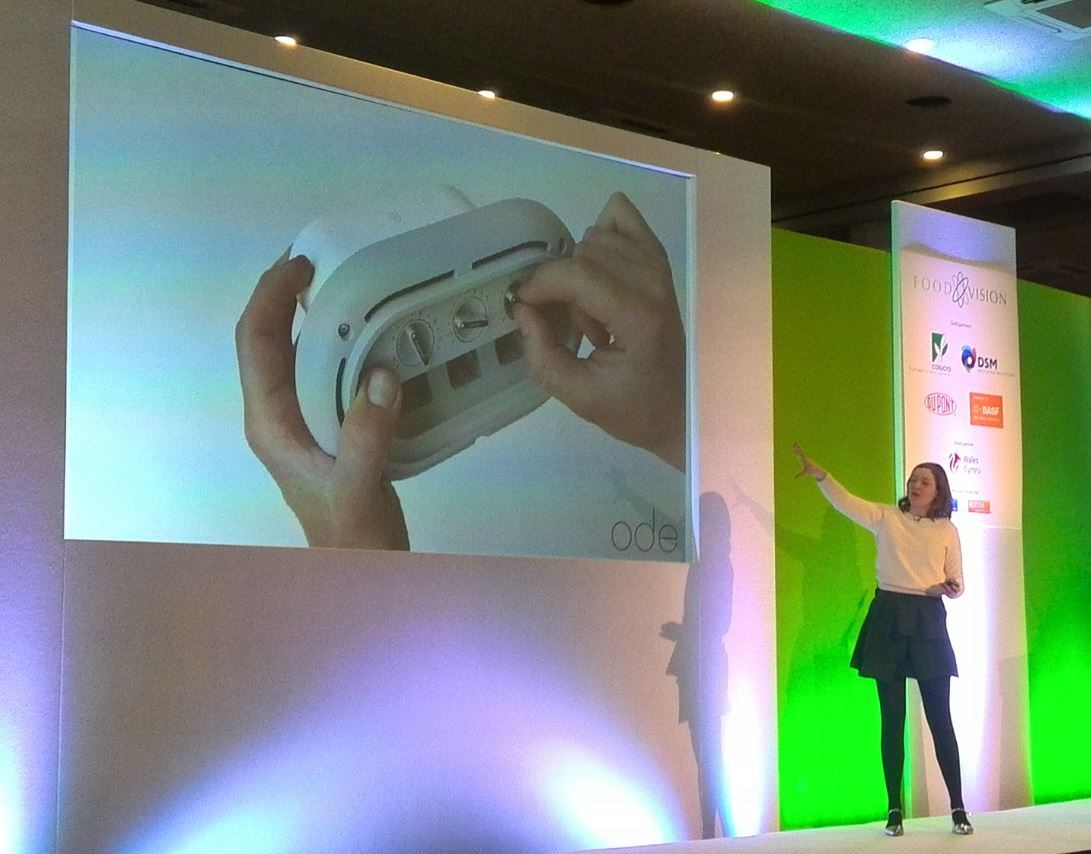As people age they lose their sense of smell and taste and there is little incentive to eat tasteless food, meaning hidden hunger and undernutrition among the elderly is a growing problem among Europe's ageing population.
Many over 60s also experience difficulty or pain when swallowing, a condition known as dysphagia, which further diminishes food intake while those suffering from dementia can struggle to remember when mealtimes are or whether they have already eaten.
Lizzie Ostrom, co-founder of Ode, a device that emits fragrance and scent below the threshold level of perception in order to stimulate appetite amongst care home patients in England, helping to create a sensory connection with food. Operating in 60 care homes across the UK, Ode has recently begun exporting to Denmark and the Netherlands.
Ode works on the basis that scents and smells are connected with a vast memory bank - and can work as a prompt to stimulate appetite but also evoke positive feelings of nostalgia around food.

Past studies have shown the use of fruity aromas have been known to increase choices to eat fruit, Ostrom told attendees of Food Vision last week, but it’s a case of striking the right balance – if food is manipulated to produce more retronasal aromas this may decrease intake of food in some cases.
Cultural factors also come into play. A first round of tests using the Ode device among British elderly patients used curry flavour to little effect whereas 'comforting' smells that evoked nostalgic memories of the past were effective - pies, stews, vegetables and roasted meats in this case.
But tailoring smells to one specific cultural norm could have mixed results. Ostrom pointed to one study in which French participants were exposed to the smell of fresh mint which was associated with positive emotions and comforting feelings of nostalgia - but only for those of North African origin where mint is commonly used in cooking.
Meanwhile using certain fragrances to stimulate a desire to eat specific foods is an area for future research. “The more we develop fragrances the more we want to be able to match it,” she added.
“In some instances it seems that a specific aroma can produce a cue to eat that food to make healthier choices but doesn’t really apply to instances of malnutrition because you’re looking at calories. But we’ve been trying to find fragrances, such as orange juice, that is palatable, uplifting and get the appetite going in general even if you won’t eat a bowl of oranges afterwards,” she said.
An opportunity to be a leader
With Europe’s population growing older and older, the food industry is increasingly aware of the importance in overcoming these problems, but Ostrom said it could be doing more. “Manufacturers and suppliers should be looking at ways to create the optimal environment for nutrition and eating.
“The focus is often on products themselves – the pack, the merchandising, the brand positioning in store – but I think there could be a role for manufacturers and suppliers to play in supporting and advising end-users, whether that is consumers, B2C or B2B - the care industry and healthcare providers - in how to create the most optimally designed environment for enjoying food.
"There’s an opportunity for manufacturers and suppliers to come in and be leader in this.”
Ode has also set its sights beyond care homes. "We’ve started where there is an identified need, and also fairly late on. But if the device could be used in home to avoid instances of under or malnutrition in the first place, this would be ideal, said Ostrom.
Finally the emotional dimension in stimulating appetite may also be worth exploring more. Ostrom cited one study in which older elderly adults who watched “heartwarming” footage ate more snacks than those who watched factual programmes. “If we feel emotional we eat more,” she said.
Didn't make it to Cannes? FoodNavigator's publishing house, William Reed Business Media, will be hosting Food Vision Asia in Singapore next month. Book your place here.

